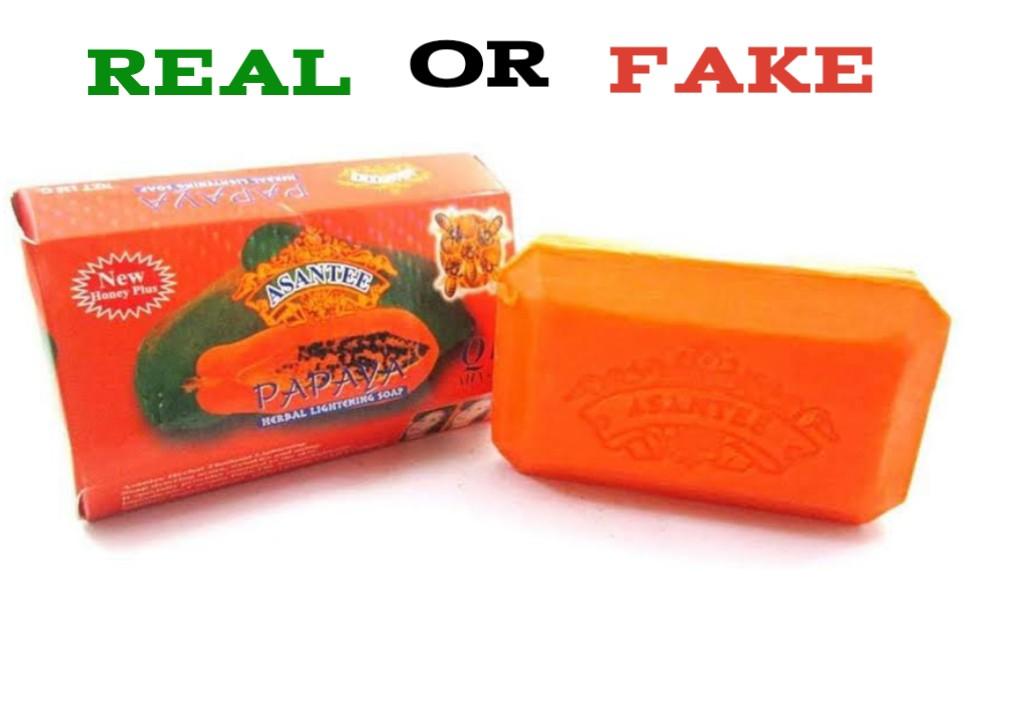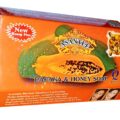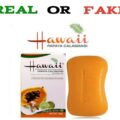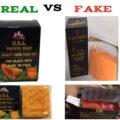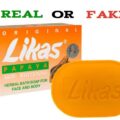Asantee papaya is a herbal skin lightning/whitening soap made in Thailand. Asantee herbal lightening soap is used for deterring acne, wrinkles and aging. The papaya kojic extract is very powerful for skin lightening and removing dark spots. However, most people don’t realize that it is not just a skin lightening soap or a dark spot eraser. There are many other skin conditions or problems that papaya kojic can treat. There are several variants of this soap such as the Asantee Papaya & Honey bar soap, Asantee Papaya and Cucumber herbal lightning soap and many others.
Papaya soaps are rich in vitamin C, an antioxidant that can reduce irregular pigmentation and stimulate collagen production. The soap also contains vitamin A, another important nutrient for the skin. It promotes the production of new skin cells, and may help reduce dark spots, blemishes, and scars.
Kojic acid, another major ingredient in some variants of this soap is a chelation agent produced by several species of fungi, especially Aspergillus oryzae, which has the Japanese common name koji. Kojic acid is a by-product in the fermentation process of malting rice, for use in the manufacturing of sake, the Japanese rice wine. In cosmetics, Kojic Acid is popularly known for its excellent whitening effects and antioxidant properties. In addition to skin-lightening effects, kojic acid also contains some antimicrobial properties. It may help fight off several common types of bacterial strains even in small dilutions. This can help treat acne caused by bacteria in the skin. It may also lighten scars from acne that haven’t faded yet.
Kojic acid also has antifungal properties. It’s even added to some antifungal products to increase their effectiveness. It may be useful in treating fungal infections of the skin like yeast infections, candidiasis, and ringworm or athlete’s foot. If soap containing kojic acid is used regularly, it may help prevent both bacterial and fungal infections on the body. Original Asantee papaya soap is made even better with the addition of high grade virgin coconut oil in the mix.
Honey makes a great exfoliant. It contains mild alpha hydroxy acids, such as gluconic acid. These acids are very safe to use on skin and can loosen bonds between the dead skin cells, making it easier to shed the dead layer. These acids also increase elasticity, balance out oily skin, stimulate collagen production, and minimize lines and wrinkles, making you look younger.
How To Identify Original Asantee Soap vs Fake
Fake soaps can wreck havoc on your skin, as they often cause dry, dehydrated skin due to their high pH, your skin needs to maintain a specific, fairly acidic pH to function properly. The acid mantle, a thin, protective layer, is primarily composed of sebum, the skin’s naturally produced oil. Its integrity is susceptible to irregularities caused by internal and external factors, like diet, pollutants and fake soaps. To keep skin healthy, the acid mantle needs to be able to do its job, and to do its job we need to avoid cleansers that could upset its pH balance.
According to the FBI, the Internet has given consumers widespread access to health and beauty products some labeled with “anti-aging” properties that they don’t know are fake. Government and industry studies and testing have discovered dangerous ingredients within counterfeit “anti-aging” products. Fraudulent cosmetics may contain arsenic, beryllium, and cadmium all known carcinogens along with high levels of aluminum and dangerous levels of bacteria from sources such as urine. Some of these products have caused conditions like acne, psoriasis, rashes, and eye infections. A fake Asantee Soap is very easy to distinguish from the Original, the fake orange soaps are slightly darker than the original. Here are other tips to help you avoid buying a fake Asantee papaya soap. ALSO SEE: How To Spot Original Kojie San Soap vs Fake
Asantee Papaya Soap packaging: Back in the day, you could spot a counterfeit based solely on shoddy packaging. Now, that’s a lot harder to do. Now, the packaging can look almost identical. In other words, just because something looks legit doesn’t mean that it actually is, so it’s important to test the actual product or check out the retailer selling the Asantee papaya soap before slathering it all over your body.
Buy Asantee Papaya Soap from a reputable seller: When you purchase products directly from a brand or an authorized retailer, you know what you’re getting. Elsewhere on the Internet, it’s not so clear. Websites that work with third parties which many, many people turn to for their beauty products are hotbeds for fakes, and if you think you’re getting a great deal on something that’s usually super expensive or sold out elsewhere, chances are it’s probably too good to be true.
Check the Asantee Papaya Soap reviews: If you are going to buy skin care on Amazon, for example, which has many third-party sellers, it’s important to research by reading a seller’s reviews. If a seller has repeated negative reviews, or reviews that your gut tells you are ‘staged’ or ‘fake’ because they all contain nearly the exact same language, do not purchase your Asantee Papaya Soap from that seller even if the price is so compelling and attractive.
Test the Asantee Papaya Soap: Testing new products on your arm or hand is always important, but it’s especially important in the case of counterfeits. If an Asantee Papaya Soap you’ve been using forever is suddenly giving you contact dermatitis when you try it, it’s a good sign that it’s a fake Asantee Papaya Soap. ALSO READ: How to Identify Original K Brothers Soap

